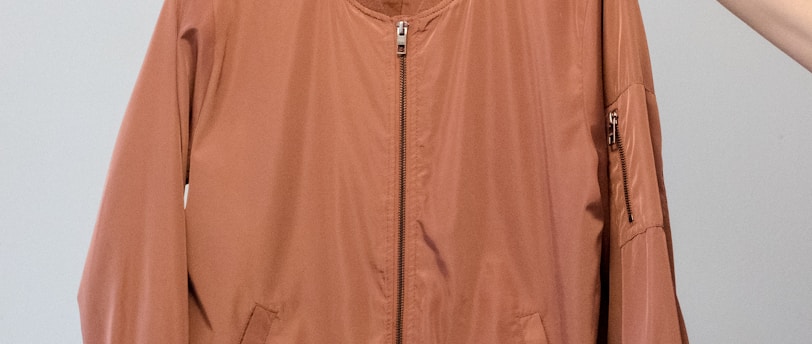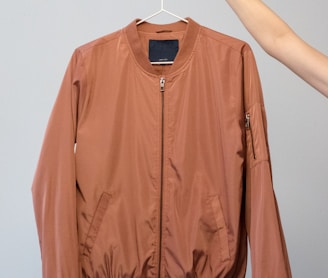Jackets and Coats Manufacturing Guide
In this guide, we'll cover everything you need to know about manufacturing jackets and coats, from choosing materials to finishing touches.
GARMENTS MANUFACTURING GUIDE


Introduction
Manufacturing jackets and coats is a complex process that requires attention to detail, patience, and skill. There are many steps involved in the process, from selecting materials to quality control. However, with the right tools and knowledge, anyone can create high-quality jackets and coats that are both functional and fashionable.
Materials
The materials used in jackets and coats are crucial for their durability, warmth, and style. Some of the most common materials used include:
Wool
Leather
Cotton
Synthetic fabrics
Down
When selecting materials, it's important to consider the climate, the intended use of the garment, and the desired aesthetic. Different materials offer different levels of warmth, breathability, and durability, so it's essential to choose the right material for the job.
Pattern Making
Once you have selected your materials, it's time to create a pattern for your jacket or coat. The pattern is the blueprint for the garment, and it's essential to get it right before moving on to the next step.
There are several ways to create a pattern, including using existing patterns, drafting your own, or using computer software. The most important thing is to ensure that the pattern is accurate and tailored to the measurements of the wearer.
Cutting
After you have created your pattern, it's time to cut the fabric. Cutting is a crucial step, as any mistakes can ruin the entire garment. It's important to have a clean, flat cutting surface and sharp cutting tools.
When cutting, be sure to follow the pattern carefully, and take your time to ensure accuracy. Cut out each piece carefully, and label them to avoid confusion during sewing.
Sewing
Sewing is where the garment really takes shape. It's important to have a good quality sewing machine and to use the correct needles and threads for the materials you are using.
Begin by sewing the main pieces of the garment together, following the pattern carefully. Then, add any pockets, zippers, or other details. Finally, add any finishing touches, such as buttons or topstitching.
Finishing
The finishing touches are what sets a high-quality jacket or coat apart from a mediocre one. Finishing includes tasks such as hemming, pressing, and steaming. It's essential to take your time with these tasks to ensure a professional finish.
Quality Control
Quality control is crucial in the manufacturing process. It's important to inspect each garment carefully for any flaws or defects before sending it to market. This includes checking for loose threads, uneven stitching, and any other imperfections that may affect the garment's quality.
Marketing and Sales
Once you have manufactured your jackets and coats, it's time to market and sell them. There are many ways to do this, including online marketplaces, social media, and traditional retail stores.
It's important to have a clear understanding of your target market and to use effective marketing strategies to reach them. This includes creating a strong brand identity, using targeted advertising, and building a loyal customer base.
Common Mistakes to Avoid
Not selecting the right materials for the job
Not following the pattern carefully during cutting and sewing
Neglecting to check for quality control issues before sending to market
Overlooking the importance of finishing touches
Tips for Success
Invest in high-quality materials and tools
Take your time with each step of the manufacturing process
Practice good quality control measures
Continuously improve your skills and techniques
Build a strong brand identity and loyal customer base
Conclusion
Manufacturing jackets and coats is a rewarding but challenging process. By following the steps outlined in this guide, you can create high-quality garments that are both functional and fashionable. Remember to take your time, pay attention to detail, and continuously strive for improvement. With practice and dedication, you can become a skilled jacket and coat manufacturer.
FAQs
What are some of the most common materials used in jacket and coat manufacturing?
Some common materials include wool, leather, cotton, synthetic fabrics, and down.
Do I need specialized equipment to manufacture jackets and coats?
Yes, you will need a sewing machine, cutting tools, and other specialized equipment to manufacture jackets and coats.
How important is quality control in jacket and coat manufacturing?
Quality control is crucial to ensure that each garment meets high standards and is free from defects.
How can I market and sell my jackets and coats?
There are many ways to market and sell jackets and coats, including online marketplaces, social media, and traditional retail stores.
What are some tips for success in jacket and coat manufacturing?
Some tips include investing in high-quality materials and tools, taking your time with each step of the process, and continuously improving your skills and techniques.
